QNAP's TVS-473-16G is of a tower design with front, vertically mounted drive bays. The cover and chassis are constructed from a good quality metal and the unit is finished off in an attractive Champagne Gold colour. The front bezel is made from a decent plastic and also gold coloured.
The unit also features a large LCD screen above the drive bays, which displays set-up information when the NAS in powered up. The power button is placed on the right-hand side of the front bezel and under it sit the USB One-touch-Copy button and the USB QuickAccess port.
The drive bays use a simple latching system to open and close; There is no form of physical lock on the drive bay doors, something to think about if you are using the NAS in plain sight in a busy office with a lot of outside traffic.
The rear panel of the TVS-473-16G is about as complex as you will see on a “desktop” NAS design and it shows just what today's units are and the TVS-473-16 in particular, capable of supporting. The panel is dominated by the grill for the Y.S Tech FD121225LB 120mm cooling fan. To the side of the grill sit the majority of the I/O ports.
There are a pair of 4K HDMI 1.4b ports, three 3.5mm audio ports (two microphone and single audio), three USB 3.0 ports and four Gigabit Ethernet ports. At the top of the rear panel is the external access for the pair of PCIe Gen3 slots, one of which houses a 2 port USB 3.1 Type A add-in card.
The back panel also has a grill for the internal speaker. Ah yes, the speaker. This is a NAS that speaks to you!! I must admit it made me jump as I was unaware that it had this voice feature until (the volume was turned up) a loud woman's voice informed me that the NAS was being prepared to start.
The four drive trays are tool free, each using a pair of press in plastic retaining bars, the pins of which sit through the screw holes in the side of the tray and into the mounting holes in the side of a drive, a simple but effective design. The mounting holes also have grommets to aid in damping down drive vibration. The bottom of the trays have screw holes for mounting 2.5in drives.
Getting access to the four DDR4 SO-DIMM slots and the two M.2 SATA ports is as simple as undoing the three small screws in the rear of the unit that holds the outer cover on. Once the cover is off you are confronted by a lot more hardware than we would consider normal for a 4-bay NAS.
The motherboard for the TVS-473-16G is housed vertically one one side of the chassis. The first thing that you notice is the large cooler for the AMD SoC. It's an active cooler that uses an Evergreen T12601BU 60mm fan which is rated at 4,800RPM.
Next to the SoC are the four DDR4 SO-DIMM slots which are stacked in pairs and below these the two ports that support 2280/2260 SATA M.2 drives. Also below the SO-DIMM slots is the 512MB SLC Apacer AP-UM512MR13CS-2MST DOM (Disk On Module) which is the home for the QNAP O/S.
Sitting on the rear of the motherboard are a pair of PCIe Gen.3 x4 slots. One of these is occupied by a two port USB 3.1 Type-A add-in card that uses an ASmedia ASM1142 controller. These slots also support dual-port 10GbE LAN cards.
If you go down the route of adding both options to the TVS-473-16G you would have a NAS with a fair degree of future proofing added in. A backplane houses the four SATA ports with each port being controlled by a Marvell 88SE9215-NAA2 IC.
Sitting in the top of the chassis on the opposite side to the motherboard is the 250W Delta Electronics DPS-250AB-44 A Flex ATX 1 power supply which is Bronze rated and cooled by a 44mm internal fan.
Having three fans cooling various components, the TVS-473-16G isn't exactly silent, but it's not that loud either even when being pushed hard when being benchmarked.
Physical Specifications
Processor AMD RX-421BD 2.1 GHz (burst up to 3.4 GHz).
Memory 16GB DDR4-2133MHz.
Gigabit Ethernet Ports x 4.
Front panel connectors 1 x USB 3.0 One-Touch-Copy, 1 x QuickAccess.
Rear panel connectors 3 x USB 3.0, 3 x Audio, 2 x HDMI 1.4b, 2 x USB 3.1
RAID support JBOD, RAID 0, 1, 5, 6, 10
Cooling 1 x 120mm fan
Maximum hard drive size supported 10TB.
Maximum Capacity 40TB.
Dimensions (D x W x H) 279 x 199 x 188mm.
Weight 4.9kg.
 KitGuru KitGuru.net – Tech News | Hardware News | Hardware Reviews | IOS | Mobile | Gaming | Graphics Cards
KitGuru KitGuru.net – Tech News | Hardware News | Hardware Reviews | IOS | Mobile | Gaming | Graphics Cards


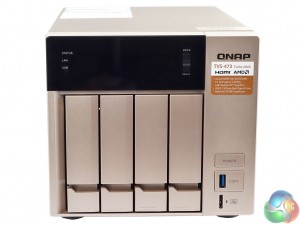
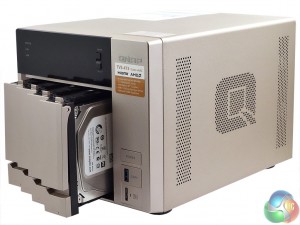
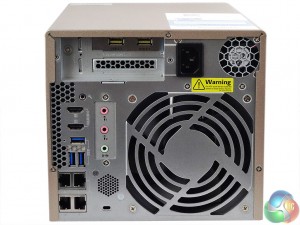
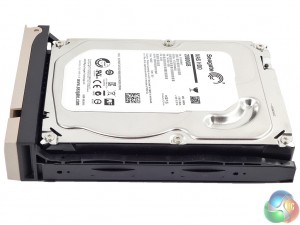
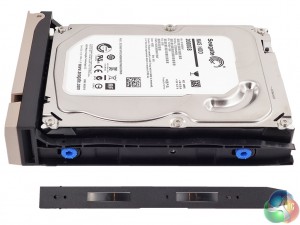
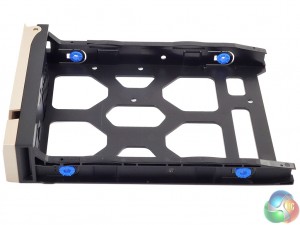
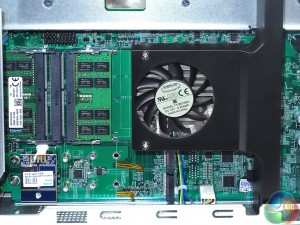
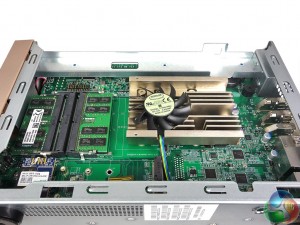
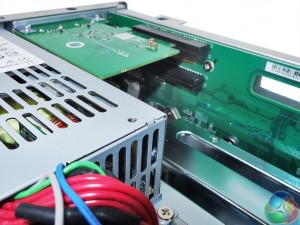
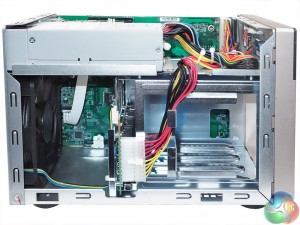
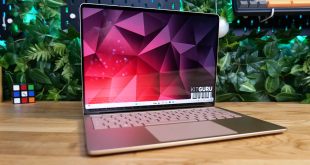
Scrolled down to the comments expecting to see the chap who trawls the internet to post his negative story on QNAP C&P’ing his woe but he’s not made it yet.
*waits*
I feel like I’ve been waiting forever for a proper review of this device—so it’s great to see your review (and that you rate it!) 🙂
I really like the TVS-x82 series with it’s dedicated SSD (and M.2) slots, but couldn’t justify the price. Although still expensive, at least this is somewhat cheaper yet still has M.2 slots for caching etc. Nice compromise, imo. The R7 graphics are also interesting.
well I have this and I’m getting only 33mb transfer speed
What is the frame rate of the the graphics chipset? I know the TVS-471 was 30 FPS so I am hoping this is markedly better and therefore better suited to also serve as a media center on top of separately being a media server.
Also which memory configuration did you end up getting, 8 GB, 16 GB, or 64 GB? Does QNAP take the cheap way out and populate all 4 SODIMM slots with the smallest possible RAM modules possible for each system memory size which thereby forces you to replace all four SODIMMs when you come around and upgrade them? Or, are they civilized and only use two of the four available SODIMM slots so you can simply add 2 more SODIMMs without wasting any RAM?
Using the built in File Station app, I got 100+mb rates from NAS to NAS.